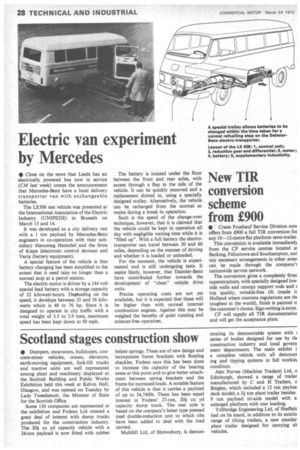Electric van experiment by Mercedes
Page 30

If you've noticed an error in this article please click here to report it so we can fix it.
• Close on the news that Leeds has an electrically powered bus now in service (CM last week) comes the announcement that Mercedes-Benz have a local delivery transporter van with exchangeable batteries.
The LE306 test vehicle was presented at the International Association of the Electric Industry (UNIPEDE) in Brussels on March 13 and 14.
It was developed as a city delivery van with a 1 ton payload by Mercedes-Benz engineers in co-operation with their subsidiary Hanomag Henschel and the firms of Kiepe (electronic control devices) and Varta (battery equipment).
A special feature of the vehicle is that battery changing has been simplified to the extent that it need take no longer than a normal stop at a petrol station.
The electric motor is driven by a 144 volt special lead battery with a storage capacity of 22 kilowatt-hours. Der(ending on the speed, it develops between 35 and 56 kilowatts which is 48 to 76 hp. Since it is designed to operate in city traffic with a total weight of 3.5 to 3.9 tons, maximum speed has been kept down to 50 mph. The battery is located under the floor between the front and rear axles, with access through a flap in the side of the vehicle. It can be quickly removed and a replacement slOtted in, using a specially designed trolley. Alternatively, the vehicle can be recharged from the normal ac mains during a break in operation.
Such is the speed of the change-over technique, however, that it is claimed that the vehicle could be kept in operation all day with negligible waiting time while it is "filled up". With a full battery the electrotransporter can travel between 30 and 60 miles, depending on the manner of driving and whether it is loaded or unloaded.
For the moment, the vehicle is experimental and is still undergoing tests. It seems likely, however, that Daimler-Benz have contributed further towards the development of "clean" vehicle drive units.
Precise operating costs are not yet available, but it is expected that these will be higher than with normal internal combustion engines. Against this may be weighed the benefits of quiet running and exhaust-free operation.




















































































































































